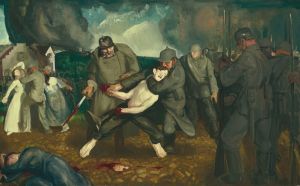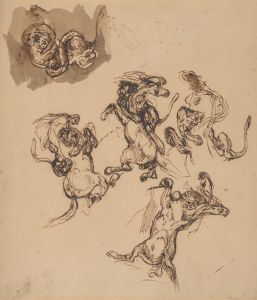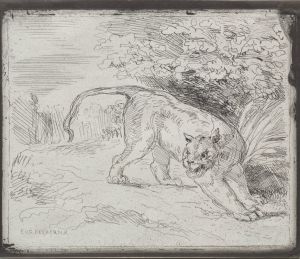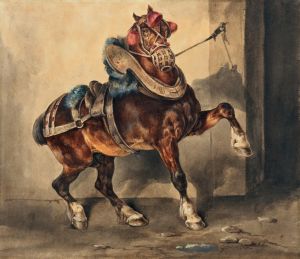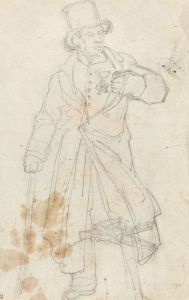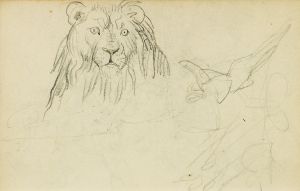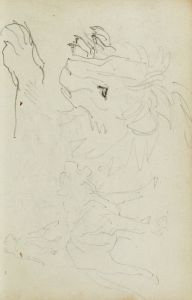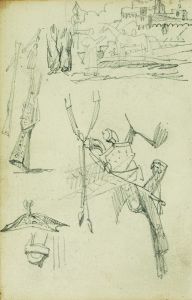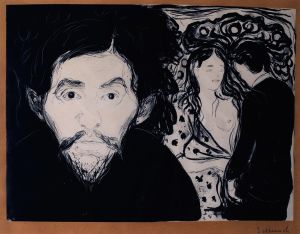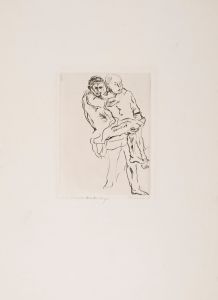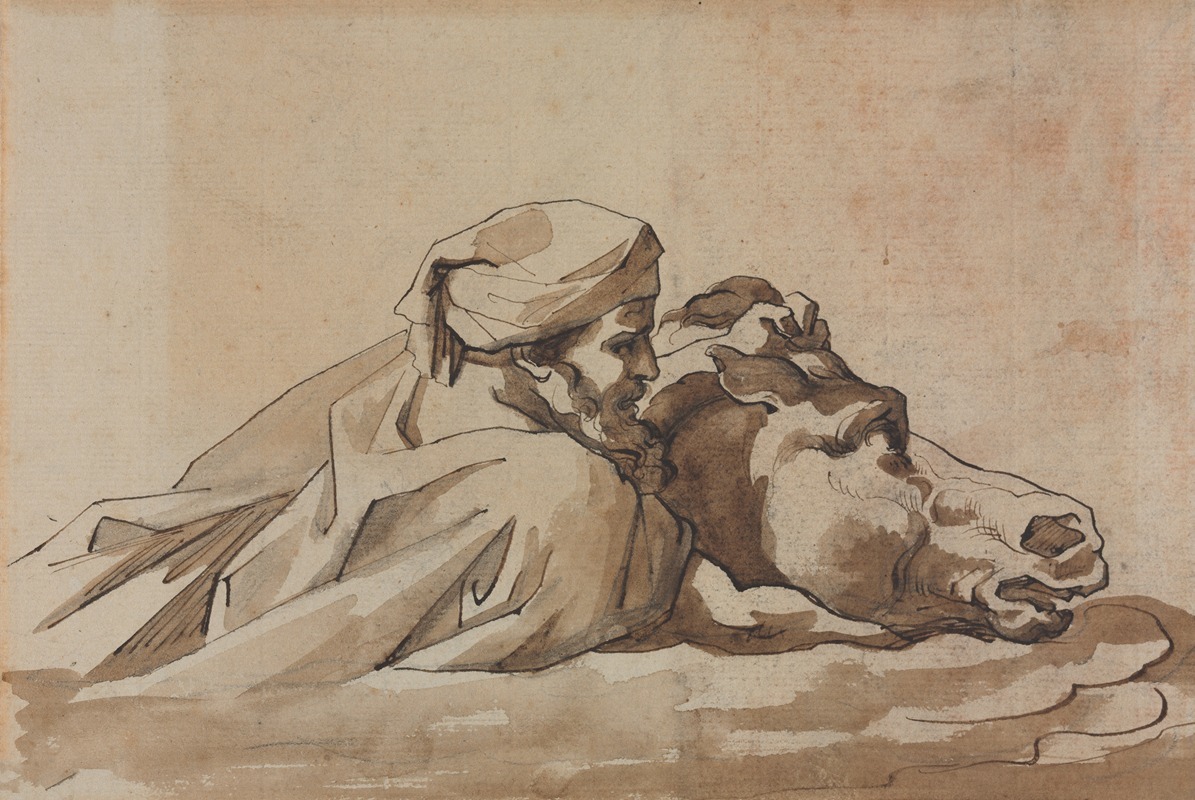
Man Clutching a Horse in Water, after Poussin’s “Deluge”
A hand-painted replica of Théodore Géricault’s masterpiece Man Clutching a Horse in Water, after Poussin’s “Deluge”, meticulously crafted by professional artists to capture the true essence of the original. Each piece is created with museum-quality canvas and rare mineral pigments, carefully painted by experienced artists with delicate brushstrokes and rich, layered colors to perfectly recreate the texture of the original artwork. Unlike machine-printed reproductions, this hand-painted version brings the painting to life, infused with the artist’s emotions and skill in every stroke. Whether for personal collection or home decoration, it instantly elevates the artistic atmosphere of any space.
"Man Clutching a Horse in Water, after Poussin’s 'Deluge'" is a painting by the French Romantic artist Théodore Géricault. This work is part of Géricault's broader engagement with themes of human struggle and natural disaster, which are recurrent in his oeuvre. The painting is a reinterpretation of a scene from Nicolas Poussin's "The Deluge," a work that depicts the biblical flood described in the Book of Genesis.
Théodore Géricault (1791-1824) was a prominent figure in the Romantic movement, known for his dramatic and emotive style. He is perhaps best known for his monumental painting "The Raft of the Medusa," which also explores themes of human suffering and survival. Géricault's interest in such themes is evident in "Man Clutching a Horse in Water," where he captures the desperation and struggle of a man and his horse amidst a deluge.
The painting shows a man clinging to a horse as they are engulfed by turbulent waters. The composition is dynamic, with the swirling water and the distressed expressions of the man and horse conveying a sense of imminent danger and chaos. Géricault's use of light and shadow enhances the dramatic effect, highlighting the figures against the dark, swirling background.
Géricault's choice to reinterpret Poussin's work reflects his admiration for the classical master while also showcasing his own unique style. Poussin (1594-1665) was a leading painter of the classical French Baroque style, known for his precise and orderly compositions. In contrast, Géricault's Romantic sensibilities bring a heightened emotional intensity and a more visceral sense of movement to the scene.
The painting is significant not only for its artistic qualities but also for its historical context. Created during a period of political and social upheaval in France, Géricault's works often reflect the anxieties and uncertainties of his time. The theme of a deluge, with its connotations of destruction and renewal, can be seen as a metaphor for the tumultuous changes occurring in early 19th-century Europe.
"Man Clutching a Horse in Water" is a testament to Géricault's skill in capturing the human condition and his ability to convey powerful emotions through his art. The painting remains an important example of Romanticism and continues to be studied for its artistic and historical significance.
While specific details about the painting's provenance and current location are not provided here, it is known that Géricault's works are held in major collections around the world, including the Louvre in Paris and the Metropolitan Museum of Art in New York. His influence on subsequent generations of artists is well-documented, and his works continue to be celebrated for their emotional depth and technical mastery.





